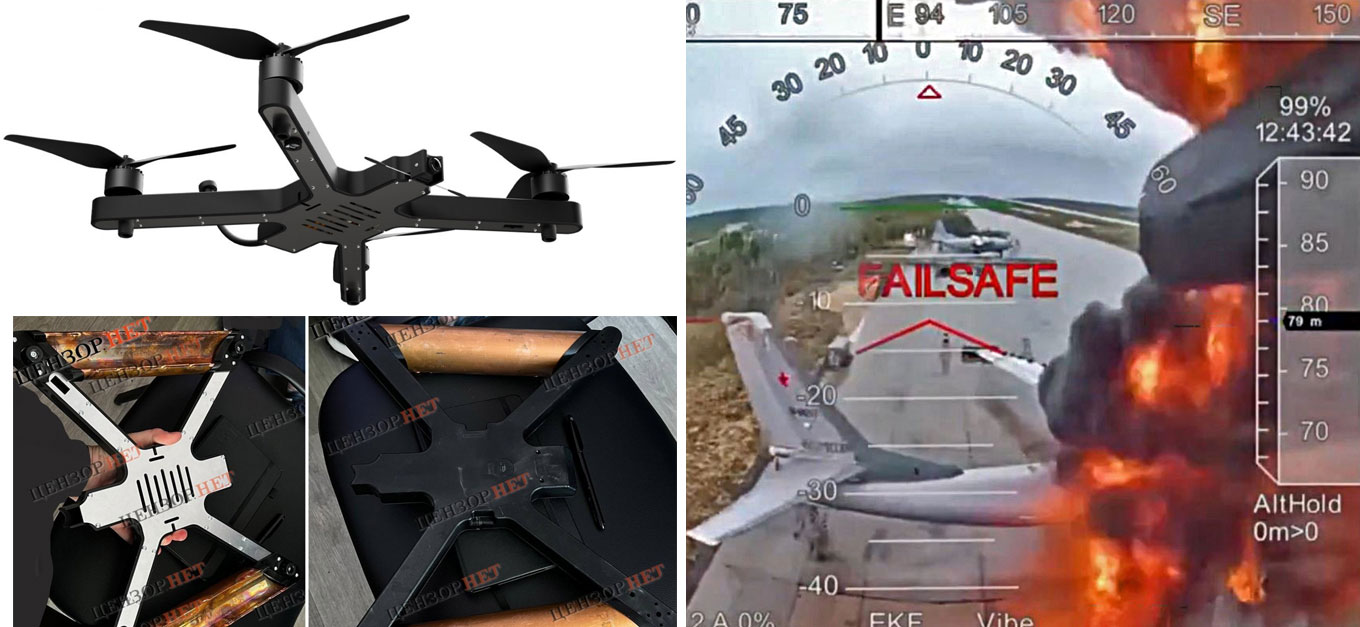A new report by Defense Express identifies Ukrainian Osa (“Wasp”) FPV drones produced by First Contact as the likely unmanned aircraft used in the Security Service of Ukraine’s (SBU) highly successful 1 June Spiderweb operation targeting Russian strategic bombers on their home bases.
Visual confirmation of drone model through unique design
Based on images from the preparation phase of the operation within Russian territory, Defense Express highlights drone units stored in hive-like structures under the roofs of mock pre-made houses, which were delivered by trucks to areas near Russian airbases.
Trojan truck op: Kyiv destroys “34%” of Russia’s strategic bomber fleet within hours with truck-launched FPV drones (updated)
According to Defense Express, these images reveal distinctive elements matching the Osa drone, including its thick enclosed frame housing all electronics, a fixed power port, and a front-placed antenna near the camera, rather than the usual rear placement.

Unlike most other FPVs that use an open skeletal frame and top-mounted cables, the Osa employs a sealed construction, which Defense Express argues made it more suited for long-distance transport inside trucks and resilient enough for use in various weather conditions.
Combat capability and final preparation on Russian soil
Further confirmation came through a high-resolution photo published by Censor.net. A bottom-up view of the drone reveals unique ventilation holes and confirms the presence of integrated skids, which served as shaped-charge warheads, according to a reader clarification. Defense Express notes that final drone assembly or arming still occurred on Russian territory prior to deployment.

Specifications support suitability for the mission
According to the manufacturer, the Osa FPV drone is capable of carrying up to 3.3 kg of payload, remaining airborne for 15 minutes, and reaching speeds of up to 42 m/s (approximately 150 km/h). These capabilities allow it to maintain stability and control even in stormy conditions — key requirements for a strike operation executed deep within Russian territory.

Potential use of AI for targeting
Defense Express also cites indications that the drones involved in the Spiderweb operation may have utilized artificial intelligence to locate, identify, and target vulnerable areas on enemy aircraft. First Contact, the manufacturer of the Osa drone, was already developing and testing AI-enabled drones as of January 2024, suggesting the firm likely had deployable systems by the time of the attack.
Independent sources reinforce drone identification
In addition to the visual and technical analysis, Defense Express consulted internal sources familiar with the operation. These sources confirmed the high likelihood that the Osa drones produced by First Contact were the exact type used in the deep-strike mission targeting strategic bomber bases.
Read also
-
Trojan truck op: Kyiv destroys “34%” of Russia’s strategic bomber fleet within hours with truck-launched FPV drones (updated)
-
Breaking: Russian strategic bombers ablaze en masse under SBU drone attack (video)
-
Satellite images reveal wreckage of Russian strategic bombers after Ukraine’s Spiderweb drone operation deep in Russia




